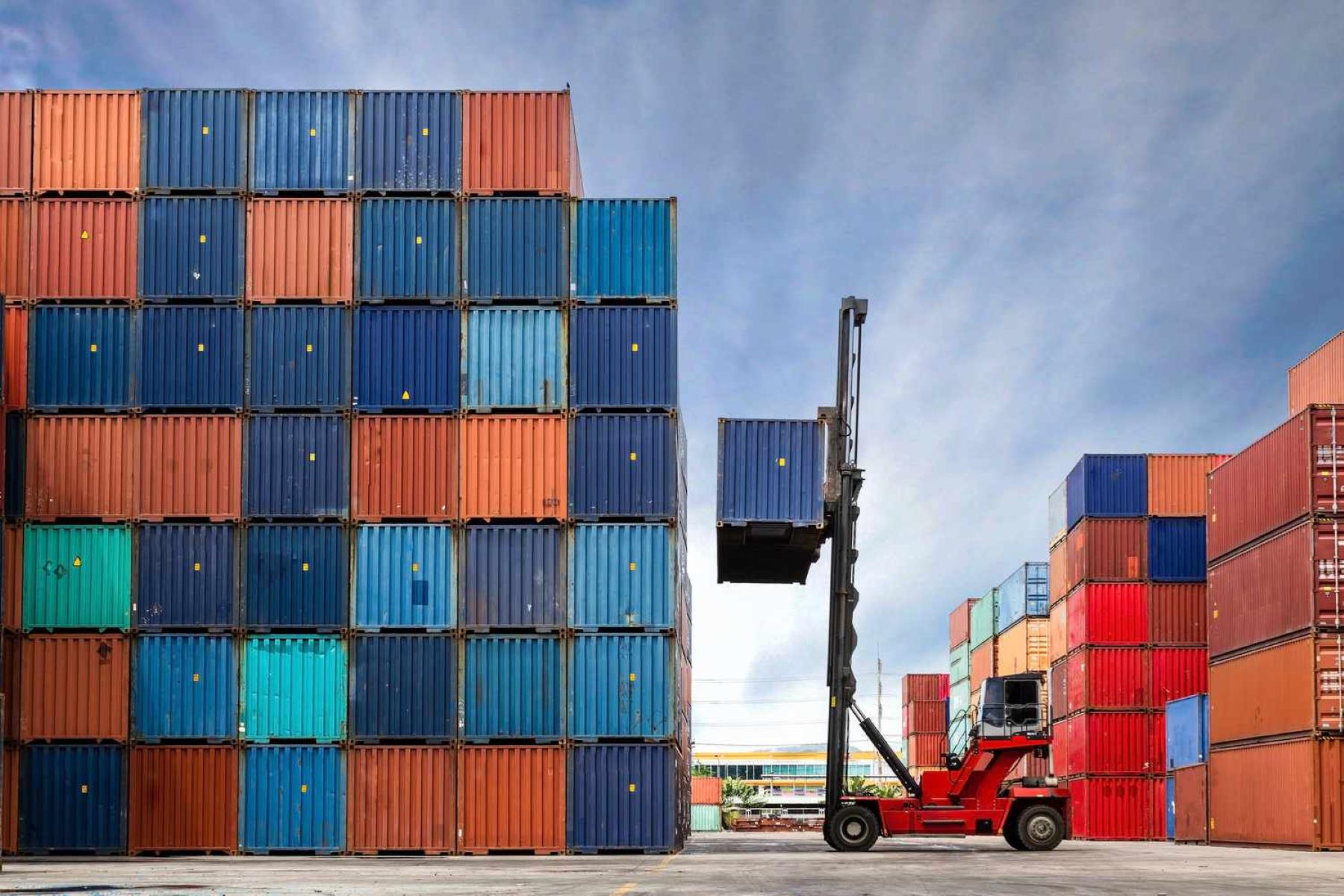

Finance
What Is Freight In Accounting
Modified: March 1, 2024
Learn the basics of freight in accounting and its significance in finance. Understand how freight costs are recorded and analyzed in financial statements.
(Many of the links in this article redirect to a specific reviewed product. Your purchase of these products through affiliate links helps to generate commission for LiveWell, at no extra cost. Learn more)
Table of Contents
Introduction
Freight plays a crucial role in the world of business and finance. In accounting, the term “freight” refers to the transportation costs incurred while moving goods or merchandise from one location to another. This can include various modes of transportation such as air, sea, rail, or road. Properly accounting for freight is essential for businesses to accurately track expenses, calculate profit margins, and maintain financial transparency.
Whether it’s a manufacturing company shipping products to customers, a retailer receiving inventory from suppliers, or a logistics firm managing the movement of goods, freight is an integral part of the supply chain. It impacts not only the bottom line but also customer satisfaction and operational efficiency.
In this article, we will delve into the concept of freight in accounting, exploring its definition, the different types of freight, the accounting treatment of freight, and the importance of proper freight accounting. We will also discuss the challenges businesses face when it comes to accurately accounting for freight costs and how it affects financial statements.
Having a clear understanding of freight accounting is crucial for businesses to effectively manage costs, make informed decisions, and ensure compliance with accounting standards. By optimizing their freight management practices, businesses can enhance profitability and streamline their operations.
Definition of Freight in Accounting
In the realm of accounting, freight refers to the expenses associated with the transportation of goods or merchandise from one location to another. It covers the costs incurred while moving products through various modes of transportation, such as air, sea, rail, or road.
Freight costs typically include charges for shipping, packaging, handling, customs duties, insurance, and any other expenses directly related to the transportation of the goods. These costs can vary based on the distance, weight, volume, and urgency of the shipment, as well as the chosen mode of transportation.
In accounting terms, freight is considered an operating expense and is classified under the cost of goods sold (COGS) or the selling, general, and administrative expenses (SG&A), depending on its nature. For businesses involved in the production or resale of goods, freight costs form a significant part of their overall expenses and can significantly impact profitability.
The accounting treatment of freight depends on the accounting standards followed by the organization. Generally, freight expenses are recognized when the goods are received or shipped, and are typically recorded as part of the cost of inventory or as a separate expense line item on the income statement. Proper segregation and allocation of freight costs are essential to accurately determine the true cost of goods or services being sold.
It is important to note that freight costs can also be passed on to customers as part of the selling price, especially in the case of businesses that offer free or discounted shipping. In such cases, freight revenue should be recognized separately and offset against the freight expenses to determine the net impact on the financial statements.
Different Types of Freight
Freight can be categorized into various types based on different criteria. Understanding these types can help businesses effectively manage and account for their transportation expenses. Let’s explore some common types of freight:
- Domestic Freight: Domestic freight refers to the transportation of goods within the boundaries of a single country. It involves the movement of products using trucks, trains, ships, or planes within the domestic market. Domestic freight is subject to the local regulations, infrastructure, and transportation networks of the country.
- International Freight: International freight involves the transportation of goods across national borders. It encompasses imports and exports, and may require the coordination of multiple transportation modes and adherence to customs regulations. International freight is influenced by factors such as tariffs, duties, customs fees, and international trade agreements.
- Air Freight: Air freight refers to the transportation of goods via airplanes. It is known for its speed, reliability, and ability to cover long distances. Air freight is often used for time-sensitive or high-value shipments, such as perishable goods or electronics. However, it is generally more expensive compared to other modes of transportation.
- Sea Freight: Sea freight, also known as ocean freight, involves the transportation of goods via ships or vessels. It is a cost-effective option for bulky or non-perishable goods that are not time-sensitive. Sea freight is commonly used for global trade and can be divided into full container load (FCL) or less than container load (LCL) based on the amount of cargo being shipped.
- Road Freight: Road freight refers to the transportation of goods using trucks or other vehicles on road networks. It is a flexible and widely used mode of transportation, especially for domestic or regional shipments. Road freight provides door-to-door delivery and can accommodate various types of goods, ranging from small packages to large cargo.
- Rail Freight: Rail freight involves the transportation of goods via trains or rail networks. It is often used for long-distance transportation of heavy or bulky items, such as raw materials or commodities. Rail freight offers efficiency, cost-effectiveness, and reduced environmental impact compared to other modes of transportation.
These are just a few examples of the different types of freight. Businesses may encounter variations or combinations of these types depending on their specific industry, geographical location, and supply chain requirements.
Accounting Treatment of Freight
The accounting treatment of freight involves recording and allocating the costs associated with transporting goods in a systematic and accurate manner. Properly accounting for freight is essential to ensure the accuracy of financial statements and to provide a clear picture of the true cost of goods sold. Here are some key aspects of the accounting treatment of freight:
- Inclusion in Inventory Cost: When goods are purchased, the freight costs incurred to bring those goods to the business’s location are often included in the cost of the inventory. This means that the freight costs are added to the purchase cost of the goods and become part of the inventory’s value. This approach ensures that the expenses related to the transportation of goods are reflected in the cost of the products being sold.
- Separate Expense Line Item: Alternatively, businesses may choose to record freight costs as a separate expense line item on the income statement. This allows for a more detailed analysis of transportation expenses and can provide insights into the total cost of shipping goods. By separating freight costs from the cost of goods sold, businesses can better track and control these expenses.
- Allocation of Freight Costs: In some cases, businesses may need to allocate freight costs across multiple products or departments. This occurs when the shipment includes various products or when different departments within the organization benefit from the transportation services. Proper allocation ensures that each product or department bears its fair share of the transportation expenses.
- Freight Revenue Recognition: If freight charges are passed on to customers as part of the selling price, businesses need to recognize freight revenue separately. This ensures that both the revenue and expense related to freight are accounted for accurately. By offsetting freight revenue against freight expenses, businesses can calculate the net impact on profitability.
It’s important for businesses to be consistent in their accounting treatment of freight and to adhere to the applicable accounting standards. Proper documentation of freight costs, including invoices and supporting documentation, is crucial for audit purposes and to ensure compliance with accounting regulations.
By following appropriate accounting practices for freight, businesses can maintain financial transparency, make informed decisions, and accurately reflect the true costs associated with the transportation of goods.
Freight Costs and Financial Statements
Freight costs have a direct impact on a company’s financial statements, particularly the income statement and the balance sheet. Properly accounting for these costs is essential to ensure the accuracy of financial reporting and to provide stakeholders with a comprehensive view of the company’s financial performance. Here’s how freight costs affect financial statements:
Income Statement: Freight costs are typically recorded as an expense on the income statement. Depending on the accounting treatment chosen, they may be included as part of the cost of goods sold (COGS) or as a separate operating expense. Including freight costs in the COGS provides a more accurate representation of the true cost of the goods being sold. It helps in calculating the gross margin and assessing the profitability of the overall operations. Separately recording freight costs as an expense line item allows for better cost control and analysis of transportation expenses.
Balance Sheet: Freight costs are reflected in the inventory valuation on the balance sheet. When freight costs are included in the cost of inventory, they increase the carrying value of the inventory and impact the company’s working capital. This is because the inventory value includes not just the cost of goods purchased but also the transportation expenses incurred in bringing the goods to the company’s location. Properly accounting for freight in relation to inventory ensures that the balance sheet accurately reflects the true cost of the company’s inventory.
Cash Flow Statement: Freight costs have an impact on the cash flow statement, particularly in the operating activities section. If freight costs are paid in cash, they are classified as operating cash outflows. However, if the freight costs are being financed or deferred, they may be recorded as changes in liabilities or other non-operating activities. Understanding the cash flow implications of freight costs is crucial for managing working capital and assessing the liquidity of the company.
Accurate and transparent reporting of freight costs on financial statements is essential for stakeholders to make informed decisions regarding the company’s financial performance and potential risks. It also enables comparisons with industry standards and helps in identifying opportunities for cost savings and operational improvements.
It’s important for businesses to establish robust internal controls and systems for tracking and recording freight costs to maintain the accuracy and integrity of their financial statements. Additionally, regular reviews and reconciliations should be performed to identify any discrepancies or errors in accounting for freight costs.
Importance of Proper Freight Accounting
Proper freight accounting is critical for businesses to effectively manage their transportation costs, maintain financial transparency, and make informed decisions. Here are some key reasons why proper freight accounting is important:
- Accurate Cost Calculation: Properly accounting for freight allows businesses to accurately calculate the true cost of their products. Including freight costs in the cost of goods sold (COGS) provides a more precise understanding of the profitability of each sale. This enables businesses to set competitive pricing, negotiate supplier contracts, and identify cost-saving opportunities in their supply chain.
- Financial Transparency: Transparently reporting freight costs on financial statements promotes transparency and helps build trust with stakeholders, including investors, lenders, and regulatory bodies. It allows them to assess the financial health of the business and make informed investment or lending decisions. Transparent freight accounting prevents misinterpretation or misrepresentation of financial data, reducing the risk of financial irregularities or fraud.
- Efficient Cost Control: Proper freight accounting enables businesses to effectively control their transportation expenses. By accurately tracking and analyzing freight costs, businesses can identify areas of inefficiency, such as high shipping costs or unnecessary fees. This empowers them to negotiate better rates with carriers, optimize shipping routes and methods, and streamline their supply chain operations, resulting in significant cost savings over time.
- Compliance with Accounting Standards: Proper freight accounting ensures compliance with accounting standards and regulations. Adhering to accounting principles, such as those outlined by the Generally Accepted Accounting Principles (GAAP) or International Financial Reporting Standards (IFRS), helps maintain consistency and comparability in financial reporting. Compliance with accounting standards also mitigates the risk of penalties, audits, or legal repercussions from regulatory authorities.
- Informed Decision Making: Accurate and timely freight accounting provides businesses with valuable insights to support strategic decision-making. By understanding the true cost of transportation, businesses can evaluate the profitability of different sales channels, assess the impact of different pricing strategies, and identify opportunities for operational improvements. Informed decision-making based on reliable freight accounting data leads to more effective resource allocation and better overall business performance.
Proper freight accounting is a vital component of financial management in any business involved in the movement of goods. It enables businesses to have a comprehensive understanding of their transportation costs, make informed business decisions, ensure compliance, and ultimately drive profitability and growth.
Challenges in Freight Accounting
Freight accounting presents various challenges for businesses, requiring careful attention to detail and adherence to accounting standards. Here are some common challenges in freight accounting:
- Complexity of Transportation Networks: Businesses operating in global supply chains often encounter complex transportation networks involving multiple carriers and routes. Tracking and accurately allocating freight costs across these networks can be challenging, particularly when dealing with different currencies, customs regulations, and contract terms.
- Freight Rate Variability: Freight rates can vary due to factors like fuel prices, carrier capacity, demand, and external market conditions. Businesses need to monitor these fluctuations, as they can impact transportation costs and ultimately profitability. Keeping up with constantly changing freight rates can be challenging, requiring ongoing analysis and negotiation with carriers.
- Freight Audit and Verification: Verifying the accuracy of freight charges and auditing transportation invoices can be time-consuming and complex. Ensuring that the charges align with the agreed-upon rates, verifying the accuracy of surcharges and accessorial fees, and reconciling discrepancies can be challenging. Implementing automated freight audit systems or utilizing third-party auditing services can help in streamlining this process.
- Correct Allocation of Freight Costs: Properly allocating freight costs to individual products, projects, or departments can be a challenge, particularly when multiple products or departments benefit from the transportation services. Businesses need to establish clear allocation methodologies based on factors like weight, volume, or revenue contribution to ensure fair and accurate distribution of freight costs.
- Integration with ERP Systems: Integrating freight accounting processes with enterprise resource planning (ERP) systems can pose challenges. Ensuring seamless data flow between various systems, such as transportation management systems, accounting software, and inventory management systems, requires careful planning and configuration to avoid data discrepancies or process inefficiencies.
- Evolving Regulatory Requirements: Compliance with ever-changing regulatory requirements in the transportation industry can be challenging. Businesses need to stay updated on changes in tax regulations, customs regulations, reporting requirements, and industry-specific regulations that may impact the accounting treatment of freight costs.
Overcoming these challenges requires businesses to implement robust processes, utilize technological solutions, and maintain effective communication with carriers and other stakeholders in the supply chain. By addressing these challenges, businesses can ensure accurate and transparent freight accounting, manage costs effectively, and optimize their transportation operations.
Conclusion
Proper freight accounting is vital for businesses to effectively manage their transportation costs, maintain financial transparency, and make informed decisions. By accurately accounting for freight, businesses can calculate the true cost of their products, control expenses, and ensure compliance with accounting standards.
Throughout this article, we have explored the definition of freight in accounting and the various types of freight that businesses encounter. We have also discussed the importance of proper accounting treatment for freight, including its inclusion in inventory cost and the allocation of freight expenses. Furthermore, we have highlighted the impact of freight costs on financial statements, including the income statement, balance sheet, and cash flow statement.
Proper freight accounting provides businesses with accurate cost calculations, financial transparency, and efficient cost control. It enables businesses to comply with accounting standards, make informed decisions, and enhance overall operational performance. However, it does come with its fair share of challenges, such as the complexity of transportation networks, variability in freight rates, and the correct allocation of freight costs.
By overcoming these challenges through robust processes, technology solutions, and effective communication, businesses can ensure accurate and transparent freight accounting. This will help them manage their transportation expenses, improve profitability, and optimize their supply chain operations. It is crucial for businesses to prioritize proper freight accounting as a part of their financial management practices to drive growth and success.














